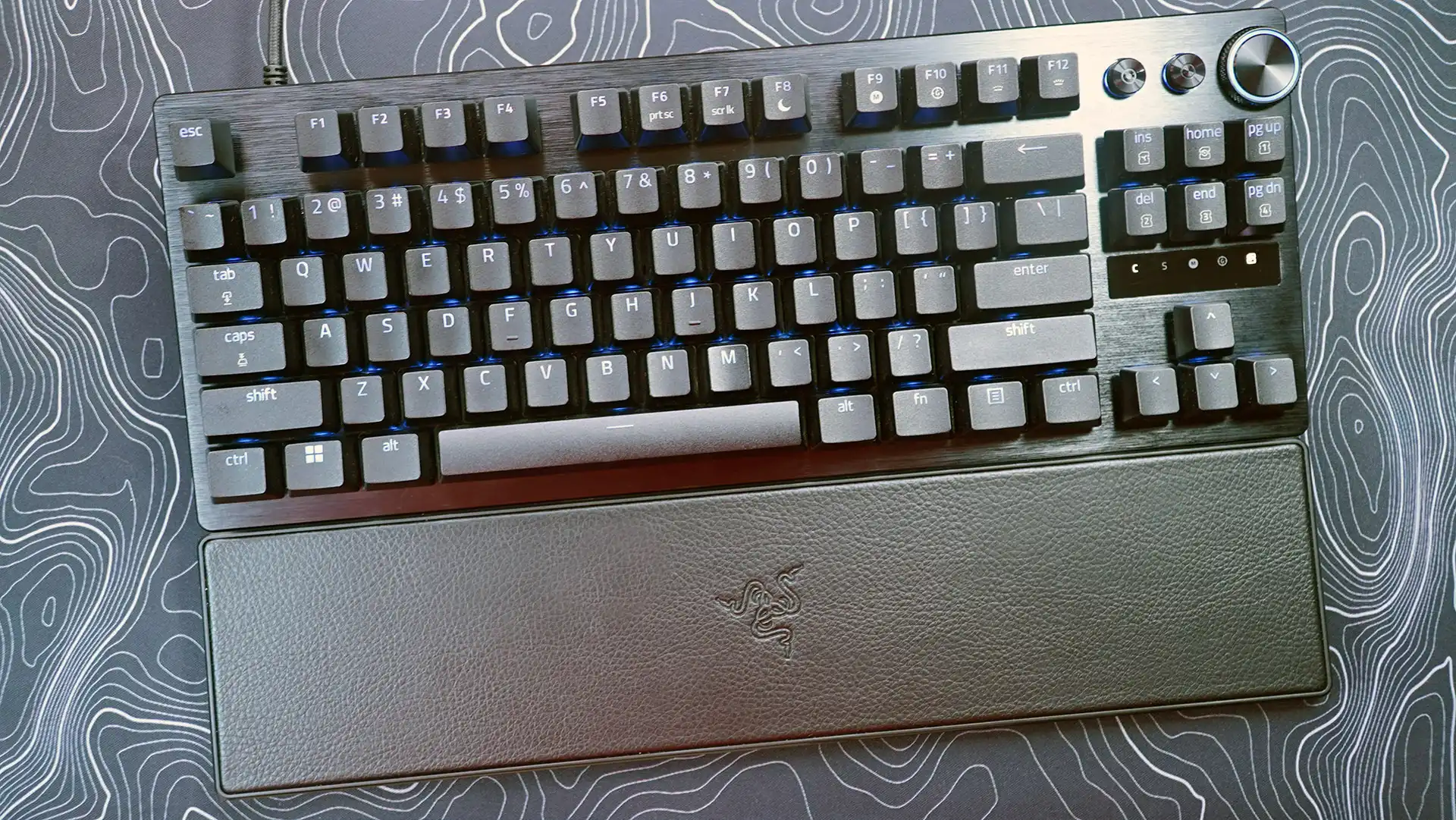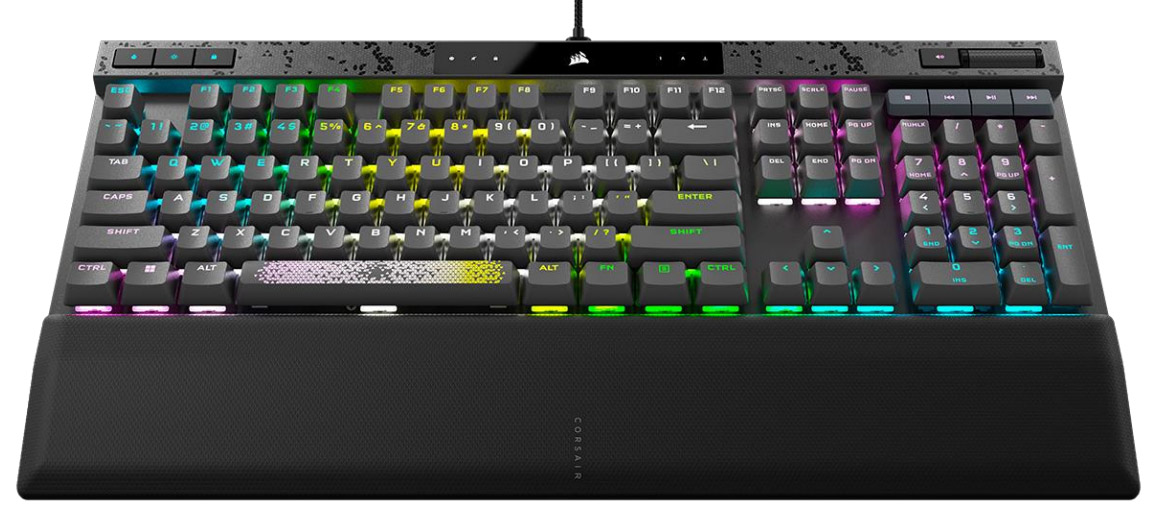The Huntsman V3 offers unbeatable keyboard programming with its analog-focused software and profiles, even if its typing and value is a bit flat.
Do you need a keyboard wherein each individual key has analog sensitivity? For me the answer is “no.” But then, I’m not a G-Fuel-chugging pro gamer with reaction times faster than a striking cobra. And the fact is that someone keeps buying these very niche, very expensive boards, as every major manufacturer seems to be making at least one. Now that Razer is on its third generation of the analog, optical-powered Huntsman, is it worth a spot in your RGB-laden battlestation?
If you’re really, really sure you need a keyboard with adjustable actuation, I’d say that it is. Instead of resting on its laurels with the optical switches and merely adjusting some of the aesthetics, Razer has put serious thought into how users can actually utilize the Huntsman’s defining feature, the ability to adjust the actuation point (how far down you have to press before a keystroke is registered) of its keys. The keyboard’s ability to quickly swap through several profiles on the fly and more easily adapt presses interpreted as controller buttons is impressive.
That said, this remains very niche functionality. If you can’t think of an immediate and compelling reason to use the features above, you’d be better served by something like the versatile BlackWidow V4 75%, especially at this price range. But if you simply must have the most customization possible, or you want to completely replicate console controls using a keyboard, the Huntsman delivers.
Further reading: See our roundup of the best gaming keyboards to learn about competing products.
Huntsman V3 design
The Huntsman V3 might be the ur-Razer keyboard at this point: jet black, RGB lights, and an intense focus on gaming. It’s neither as bright and flashy as the BlackWidow V4 Pro nor as trendy as the V4 75%, with the latter’s functionality inherited from custom designs. But the TKL (tenkeyless, lacking the number pad) design is focused and functional, sparing only the rarely used Print Screen, Scroll Lock, and Pause buttons for some far more immediate media controls. This is a pretty sizeable shift from the V2 TKL layout.
Those controls are worth a little attention. Razer has gone with a rotary dial instead of the more horizontal barrel it’s been favoring in a few more recent releases. I like the change. Not only is it appealingly radial and immediate with its RGB circle, it’s easier and more natural to press down quickly to mute the volume. Even the design itself is premium, with a knurled edge like a high-end wrench and a circular pattern on the top button. Two metallic, illuminated buttons sit beside it: Play/Pause and a link to the Xbox Game Bar, by default.
The rest of the design is simple, but no poorer for that. You get “floating” keys above a brushed metal keyboard deck, and a magnetic wrist rest included in the box. That’s a welcome addition to any keyboard, but particularly notable for a high-priced one, as its absence is a knock against value for me. That said, this hardened plastic rest is considerably less comfy than the cushioned one included with recent BlackWidow designs. After a few days I went back to my $10 Amazon foam rest for comfort.
The Huntsman V3 offers the usual detachable USB-C cable, very long, dual-stage feet, and a surprisingly lightweight plastic body. At just 25.3 ounces (.717 kilograms) on my kitchen scale sans wrist rest, it’s a definite option if you often travel with your keyboard, provided your bag has room for its 14-inch (35.6 cm) width. Lighting is minimal, at least by Razer standards, eschewing the illuminated sides and wrist rest of some models.

Michael Crider/Foundry
One last note on the materials: Razer has deigned to bless the Hunstman line with PBT shine-through keycaps, a luxury not granted to the BlackWidow line even when they’re in the same price range. (Yes, I will die on this hill — at least as long as Razer is selling separate PBT plastic upgrades.) They’re a bit thin and light, but the more premium, “scratchy” texture is welcome to my fingertips. If you prefer to supply your own, the standard ISO layout and Cherry-style cross stems make this keyboard compatible with almost all ISO-standard keycap sets.
What’s an optical switch?
What makes the Huntsman different from the BlackWidow? Beyond the cosmetics, the Huntsman series is the only one Razer offers with optical switches, which detect a key press by interrupting a beam of light instead of closing an electrical circuit like a standard MX-style key. This closes off a couple of options, but offers a degree of “analog” customization that’s impossible in less complex designs.

Michael Crider/Foundry
What that means is that you can choose the point of actuation for most of the keys, adjusting how hard you have to press down before it will register. The keys can detect as little as .1mm of movement, all the way down to a full range of motion at 4mm. And if that doesn’t sound like much, trust me: When everything is set to the lightest option this thing feels like it’s on a hair trigger, especially with my sausage fingers.
Analog switches also offer an extra bonus: the option to bind a second action to each key, with the first activating at a light press and the second with a harder press. Again, both of these actuation points are adjustable. Just as an example, it’s possible to bind the standard W key to make your character walk forward with a light touch, while a full-weight press will make them sprint. You can also set a key to fully analog functionality, mimicking the long trigger pull of a controller’s shoulder button or the relative directional intensity of an analog thumbstick.
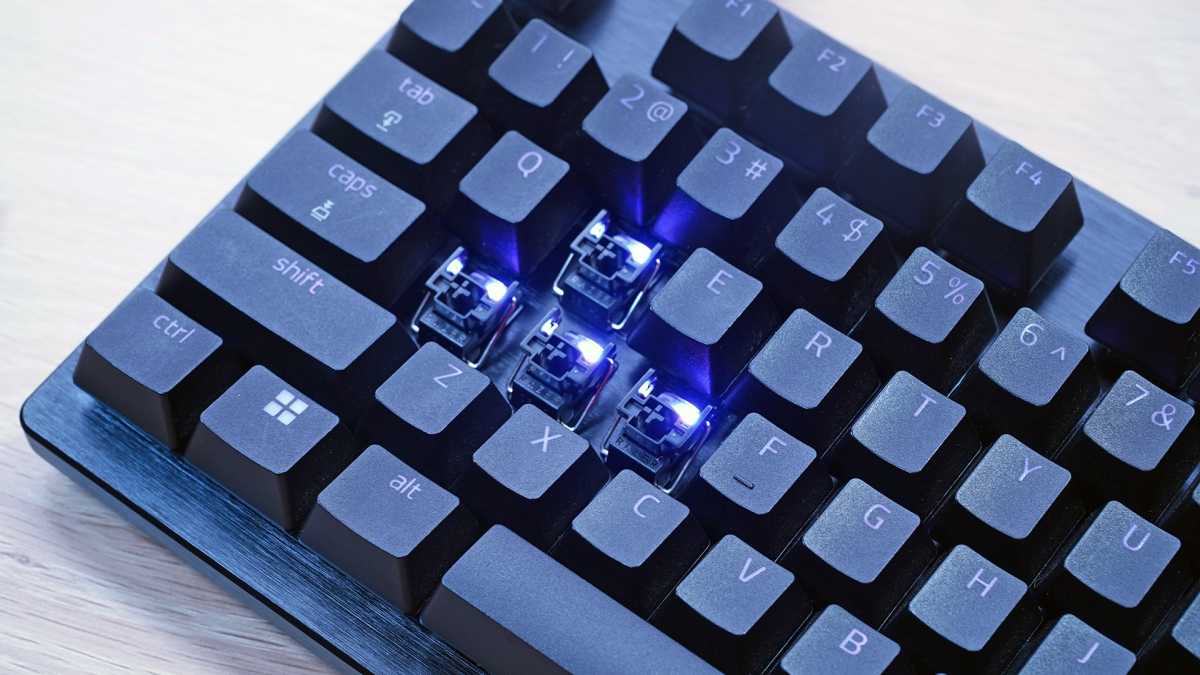
Michael Crider/Foundry
Actually making use of this advanced functionality requires some serious time investment, customizing control schemes in ways that aren’t possible on standard keyboards. The downside is that you lose the option for hot-swap key switches (as seen on the BlackWidow V4 75%), or any kind of tactility in the keys themselves.
How’s the Huntsman V3 for typing and gaming?
How is the Huntsman as a standard keyboard? Frankly, I don’t love it. Razer’s second-gen optical switches have a big central spring and an exposed external stabilizer on each switch, making them visually distinct. But the actual act of typing on them is loud and a bit wobbly, far from the smooth and somewhat muted feel of premium MX switches that you’ll find in other keyboards in this price range. You’re going to hear and feel each time the stem presses down.
There’s no satisfying tactile bump in the key travel (it wouldn’t really be feasible with the optical design), making this keyboard’s typing all bark and no bite. The standard typing isn’t as nice as Corsair’s MGX magnetic switches with similar adjustable actuation powers, but they’re better than SteelSeries’ “Omnipoint” design. That puts Razer squarely in the middle of the pack. As a writer I’d go with Corsair.
Razer’s combination of easy-to-use software and quick profile management, even without any user adjustments, shows a dedication to analog function.

Michael Crider/Foundry
But Razer isn’t marketing this at people who write 10,000 words a day. No, the Huntsman is the company’s ultimate gamer-focused board, and in that regard, it’s a little more successful. Light, centrally-weighted springs allow for faster and more confident presses in the middle of intense multiplayer, let down by a bit of scratchiness in the stabilizers for the space bar and other long keys. If you’re familiar with Razer’s other gaming-focused boards and like them, the Huntsman won’t take much adjustment in terms of feel.
At this point I should highlight the Rapid Trigger mode, which might be the most accessible advanced gaming feature on the Huntsman. Thanks to the analog sensitivity of each key (minus the cluster above the arrow keys, where that’s not really needed), you can set each key to reset whenever you let off the pressure by even .1mm. It can then activate again with .1mm of downward pressure. The practical benefit is that you can go between press and release almost literally faster than your fingers can manage. Imagine pro fighting gamers dancing in place to keep their momentum, and you’ll know what I mean. Razer isn’t the only company to offer this functionality for analog switches, but its designs seem particularly well-suited to it.

Michael Crider/Foundry
There’s one more feature of the Huntsman that takes advantage of its analog switches in a more immediate manner than the competition. The cluster above the arrow keys (Insert, Delete, et cetera) all have default secondary functions accessible with the Fn layer. These switch between four different pre-set layouts, the default typing layer, and whichever was the last that you used. Some of the presets, like Analog WASD and Racing, include incredibly finicky setups to more completely emulate the analog functions of a controller.
Huntsman V3 customization and software
Which brings me to Razer’s software for the Huntsman, and why I think it has the gaming edge over similar analog designs. I’ll begrudgingly admit that Razer’s Synapse is probably the best and easiest gaming “driver” software out there — a low bar to clear, but one that deserves recognition as gaming inputs become more and more complex. And the Huntsman is probably the most complicated input gadget the company makes at the moment.
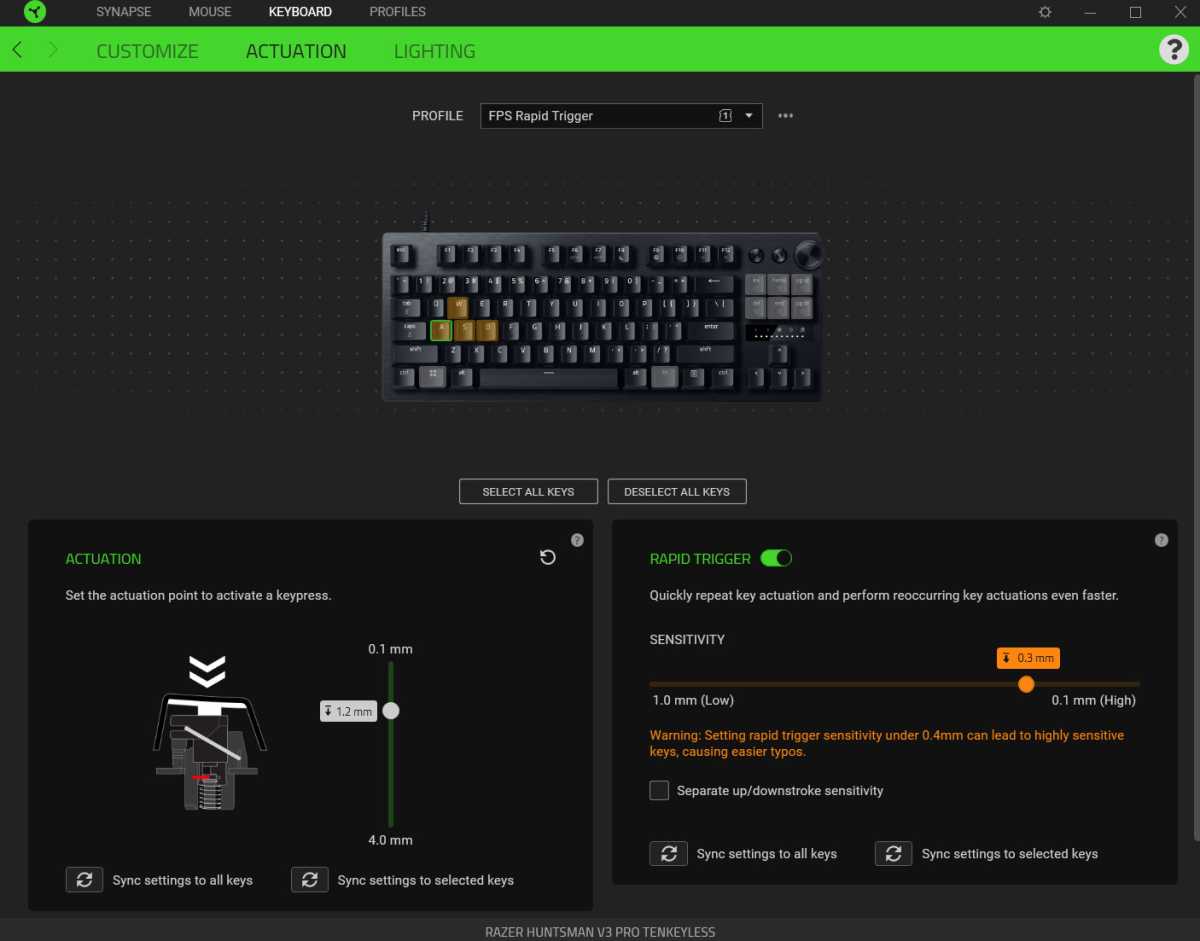
Michael Crider/Foundry
Adjustments can be made to any of the preset profiles, or you can cook up your own from scratch. Each key (except the six above the arrow keys and Fn) can be adjusted for the analog actuation point, or bound with double functions based on a dual actuation. Pretty standard stuff, insofar as anything this specific can be considered standard. But Synapse also includes a little controller pad up at the top, easily allowing you to drag-and-drop controller functions onto keyboard keys.
This makes replicating a full controller layout — including analog thumbsticks and triggers, with adjustable sensitivity via the optical actuation — super easy, barely an inconvenience. If what you want from a fancy analog keyboard is the ability to replicate console-style controls with incredibly precise presses of your keys, Razer makes it simple to achieve that. And with six function buttons dedicated to swapping profiles, it’s also easy to rapidly switch between typing and gaming modes. It’s a synergy of function and software that I haven’t seen elsewhere.

Michael Crider/Foundry
The rest of the software is pretty standard stuff, allowing you to customize the lighting to your heart’s content and trigger specific layouts with the launch of different games or programs. You can also store profiles on the keyboard itself and record macros on the fly, if you’d prefer to uninstall Synapse or keep it from running in the background. Unfortunately some of the most advanced functions — including the mapping of analog controller inputs — require Synapse to be installed.
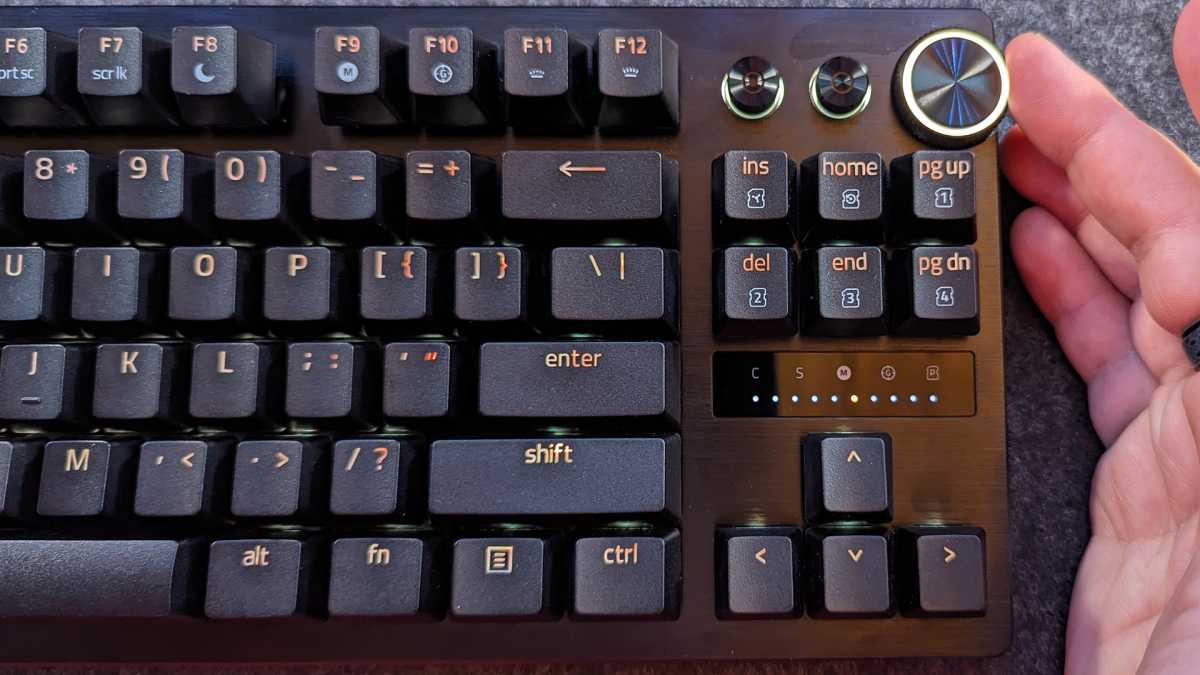
Michael Crider/IDG
One thing that doesn’t need Synapse is a rather ingenious way of customizing the actuation point, in 10 separate levels, using only the keyboard’s built-in hardware. You can activate this mode by pressing Fn+Caps Lock, at which point the volume dial will turn into your selector. You can see which level of actuation is currently selected via the LED notification are above the arrows: all the way left for level 1, the lowest, all the way right for level 10.
Is the Huntsman V3 Pro TKL worth it?
Razer asks for $220 for the Huntsman V3 Pro TKL. It’s $250 for the full-sized version, $180 for the teeny-tiny Mini with its 60% layout. That’s pretty dang pricey in anybody’s money. And it’s the most expensive selection among competitors that offer adjustable switch actuation.
Corsair asks $230 for its K70 Max with magnetic adjustable keys, making it technically a better deal with its full-sized layout. SteelSeries also charges $180 for adjustable magnetic switches in its Apex Pro Mini, and only $190 for the latest version of the Apex Pro TKL, with the questionably necessary addition of a tiny OLED screen. The wireless version of that board is $250.
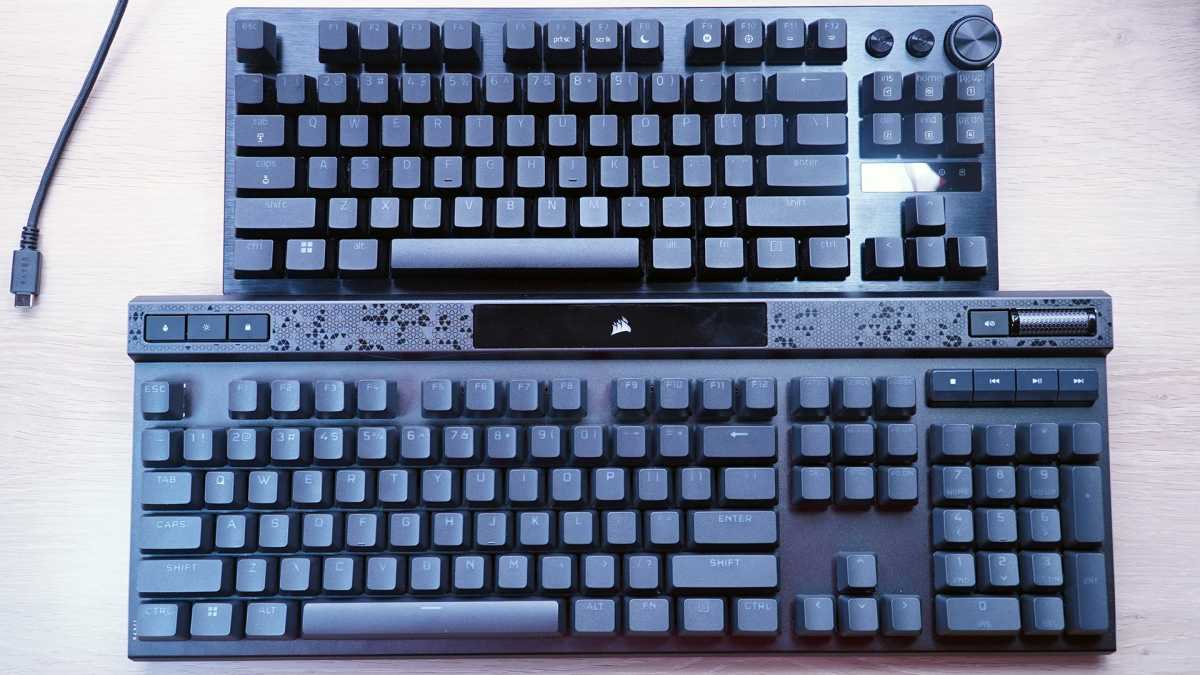
Michael Crider/Foundry
For everyday typing, I’d go with the Corsair hands-down. It has a superior feel and sound thanks to a more robust, foam-filled body. But then, I wouldn’t buy a keyboard with adjustable actuation switches just for typing. These keyboards are for gaming, arguably much more so than simpler mechanical designs. And in that context, I have to give the nod to Razer despite its higher price tag at almost every form factor.
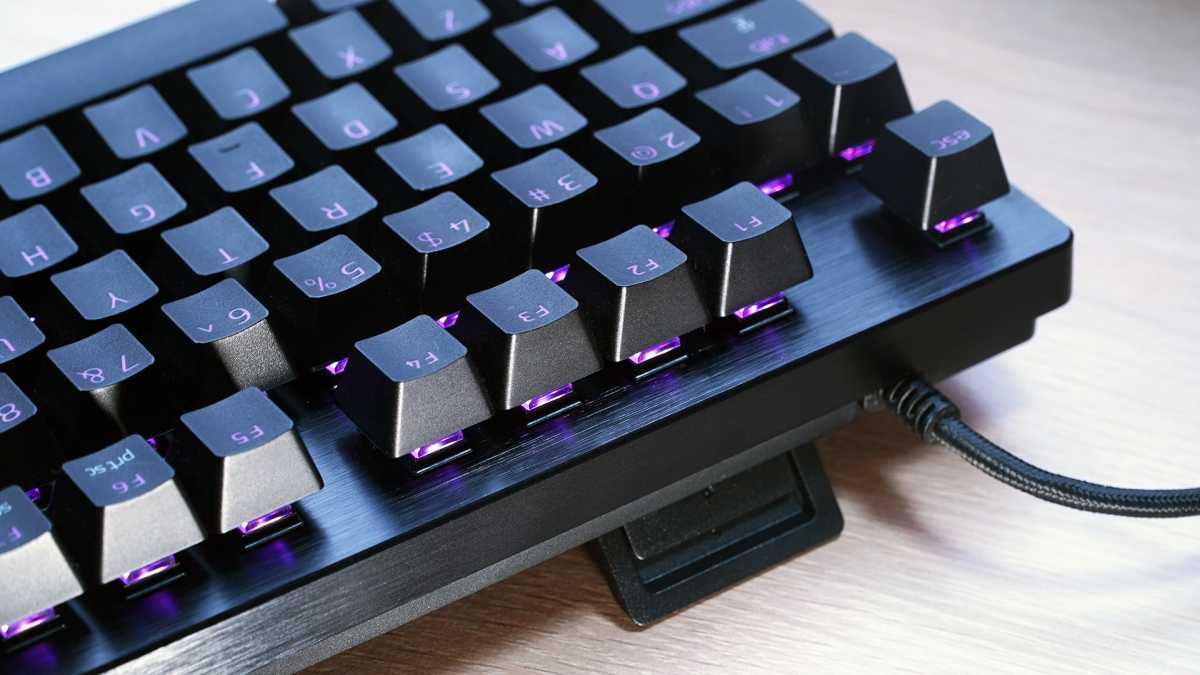
Michael Crider/Foundry
If adjustable key actuation isn’t important to you…then I don’t know why you read this lengthy review. But if it is, the Huntsman V3 is the best choice for gamers who want easy and complete control of their complex game controls.

